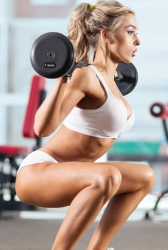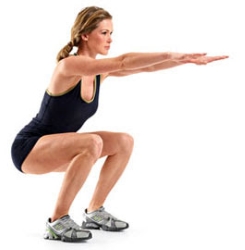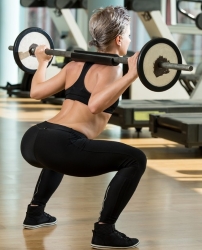If your squat technique could be better, you’re not making the most of one of the core exercises in a good strength and conditioning workout. You might also be missing the warning signs of something more serious. A lack of flexibility from tight muscles can force other muscles to overwork to compensate. This can lead to excessive soreness, chronic pain or even long-term injury.
Table Of Contents
Why Squat Technique Matters

Squats are an excellent exercise and work the muscles of all the lower body. This includes glutes, hamstrings and quads, plus they affect the body as a whole. But if your squat technique isn’t as good as it should be you won’t get the results you want. You might also find yourself waking up the next morning with excessive soreness or stiffness in your legs or back. And this can make the next couple of days hard work. If this isn’t corrected, chronic pain could develop that remains even after you stop doing squats. It could also lead to something more serious such as torn muscles or a slipped disc.
Causes Of Incorrect Squat Technique

If you’ve had someone show you how to do a good squat there are only two reasons why you have issues with your technique. One is trying to lift more weight than you are capable of, the other is lack of flexibility. This lack of flexibility usually comes from spending too much time in a standing or seated position, especially with poor posture. Add to this chronic stress and not enough stretching and over time this leads to a tightening and shortening of muscles. Areas associated with squats such as quads, hip flexors, hamstrings and lower back are particularly affected.
There are some common issues with a poor squat technique that can be linked to specific muscle problems.
Squatting With Excessive Lower Back Arch

One of the most common issues experienced with poor squat technique is excessive arching of the lower back. The spine should naturally have a lumbar curve as part of its overall S shape, but tight hip flexors will cause your pelvis to tilt forward. This is known as lordosis. The lower you attempt to squat with lordosis the more the lower back will excessively arch. This causes a knock-on effect of tight and shortened muscles elsewhere. As well as the potential for lower back pain and injury.
In the early stages these issues can be treated with massage to the hip flexors. But most likely your hamstrings, glutes, lower back and quads will also require some attention.
Not Squatting Deep Enough
A good squat technique should have your knees at 90 degrees or less and behind your toes. If you can’t manage this, even without any weight on the bar, you probably have tight hip flexors and hamstrings. This can come from too much time spent sitting or standing, but actions such as jogging can contribute.
Hip flexor and hamstrings massage will deal with the source of the problem. But depending on how your body has been compensating, other areas might require some treatment.
The “Good Morning” Squat
If your squat technique seems okay on the way down, but on the way back up you straighten your legs and only then do you straighten your back (resembling the “good morning” exercise) then you have weak or tight glutes. Probably both. If you’re not familiar with the good morning exercise it is basically a bowing forward motion(1). Done due to poor squat technique, it can cause problems with the knees, hips and lower back.
The target for treatment will be loosening up your glutes and hamstrings. But your lower back and hips will also benefit.
Knee Pain While Squatting
The cause of knee pain while squatting depends exactly where it is. As a rough guide, if it’s at the front of your knee it’s probably to do with tight quads. If the pain is on the outside then it’s a tight IT band. Knee pain to the inside or back of the knee is likely to do with hamstrings or even calf tightness.
As well as massage to the source of the knee pain, it is likely that your squat technique has suffered from trying to compensate. This causes issues elsewhere that could require some work from a good massage therapist.
Rising Heels While Squatting
If your squat technique involves your heels rising up off the floor the lower you get then you have tight calves. This in turn prevents the glutes getting a proper workout which as mentioned earlier, can lead to good morning squats. One solution is to put small weights under the heels so the glutes can still work. This doesn’t address the actual issue of tight calves though.
Lots of sitting or standing is often the cause of any tightness, as is regular jogging. Massage to the calves and hamstrings will stop you having to hunt around the gym for the right weights to stand on.
Correct Your Squat Technique
If your squat technique isn’t as good as it could be, you’re not maximising results and you’re risking injury. A sports massage at home can help you with any issues before they turn into something more serious.
Book A Mobile Massage
If you would like to book a mobile massage in York please contact me on 07713 250352 or email david@massageinyork.co.uk. Includes sports massage, deep tissue massasge and Swedish massage. For more information on booking click here
